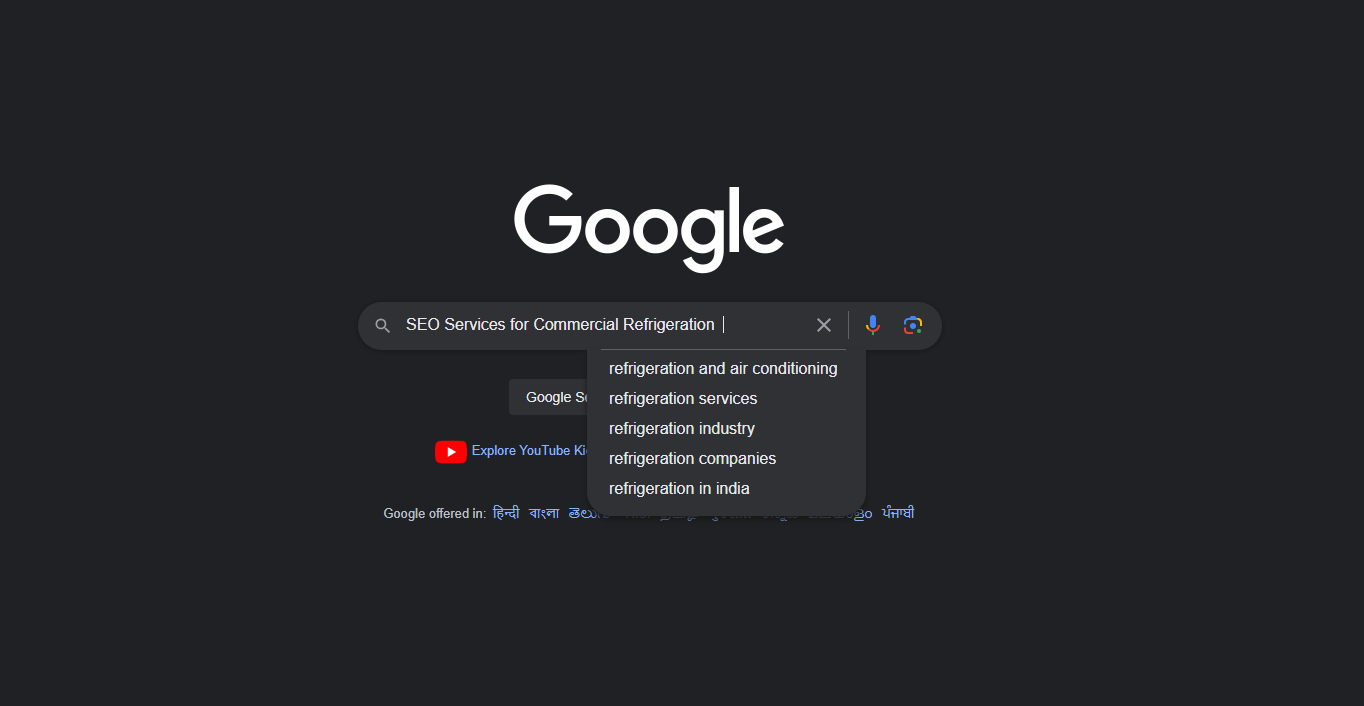Since the advent of the internet age, both small and large businesses have relied heavily on their virtual presence to boom their sales. It would not be an understatement to say that the modern information revolution has changed how to we conduct our businesses altogether.
When it comes to a specific market and competitive forces, no stone should be left unturned in order to maximize your exposure. SEO is one of the most important tools that can help a business stay ahead of the competitors. Usually, people go to search engines and type certain keywords that can help them find the services and products they seek. This is where firms compete for the market share.
Devising a decisive SEO plan is not an easy task. When you are planning to draw targeted traffic that would eventually turn engagement into sales. There is no shortcut around it and you need to pay your dues to come up at the top of the search results. This is where consumers’ trust lies.
In this post, we will go through 6 proven SEO techniques that will drive targeted traffic and boost the sales of a company.
When it comes to a specific market and competitive forces, no stone should be left unturned in order to maximize your exposure. SEO is one of the most important tools that can help a business stay ahead of the competitors. Usually, people go to search engines and type certain keywords that can help them find the services and products they seek. This is where firms compete for the market share.
Devising a decisive SEO plan is not an easy task. When you are planning to draw targeted traffic that would eventually turn engagement into sales. There is no shortcut around it and you need to pay your dues to come up at the top of the search results. This is where consumers’ trust lies.
In this post, we will go through 6 proven SEO techniques that will drive targeted traffic and boost the sales of a company.
Design a Mobile-Responsive Website
In recent times, online traffic generates from mobile and other portable devices like tablets has been tremendously increased. According to some estimates, mobile phone users have grown around 5 billion, owing to the availability of the internet and variety in mobile devices.
So, it is only natural that a major chunk of online traffic is coming from mobile phones and portable device users. For reference, 52% of the overall internet traffic has come from mobile devices in 2019.
For companies looking for converts, this is a gold mine of untapped potential and reserves.
Developing a website that is friendly to mobile phone users is a must. Here are some of the steps that can help you in getting there:
- Generate cohesive and relevant content
- Optimize visual files so that they can be loaded in the least possible time
- Go for the vertical page designs, instead of static or horizontal page designs that could only serve better to computer users
- Employ touch-friendly user and navigational tools
- Add social sharing buttons. This is a big plus since most people interact with each other over social websites
In the meantime, you can use Google’s tests to ensure your created webpage is mobile-friendly or not.
So, it is only natural that a major chunk of online traffic is coming from mobile phones and portable device users. For reference, 52% of the overall internet traffic has come from mobile devices in 2019.
For companies looking for converts, this is a gold mine of untapped potential and reserves.
Developing a website that is friendly to mobile phone users is a must. Here are some of the steps that can help you in getting there:
- Generate cohesive and relevant content
- Optimize visual files so that they can be loaded in the least possible time
- Go for the vertical page designs, instead of static or horizontal page designs that could only serve better to computer users
- Employ touch-friendly user and navigational tools
- Add social sharing buttons. This is a big plus since most people interact with each other over social websites
In the meantime, you can use Google’s tests to ensure your created webpage is mobile-friendly or not.
Target Long-Tail Keywords in Blog Posts That Are Easy-To-Rank
You have already noticed that many business websites have dedicated blog pages. So, if you do have not one, you should make one now. Blog posts can tremendously change the canvass for the targeted traffic. One of the primary fruits that you can reap with blog posts is consistent visitors’ traffic to your website.
In this regard, the best way to amplify the traffic magnitude is to use long-tail keywords in your blog posts. They are extremely helpful in improving your site’s performance in terms of traffic generation. Organically, this course of action will take your blog posts to the top of search engine results, all without seeking aid from off-page optimization or some advanced link-building strategies.
The best thing about blog posts is that they can rank on their own, depending on the keyword usage. If you can take advantage of low competition keywords, with white hat link-building techniques the search engines will find relevance automatically and your website will end up on the top of search engine results.
In this regard, the best way to amplify the traffic magnitude is to use long-tail keywords in your blog posts. They are extremely helpful in improving your site’s performance in terms of traffic generation. Organically, this course of action will take your blog posts to the top of search engine results, all without seeking aid from off-page optimization or some advanced link-building strategies.
The best thing about blog posts is that they can rank on their own, depending on the keyword usage. If you can take advantage of low competition keywords, with white hat link-building techniques the search engines will find relevance automatically and your website will end up on the top of search engine results.
Devise Content Clusters
This is a process that could take time but it will benefit your website in both SEO and visitors’ trust sides. Content clusters refer to making link structures in which the main page of your website will act as the base. The rest of the webpages are linked to it through backlinks. Put it this way, the main topics are on the main page and the content on the other pages is linked to it.
For instance, you can design the main page on general SEO knowledge and the other pages will cover the strategies, tactics, and techniques that can help the users improve their SEO.
Target 3 To 5 Keywords for Each Page on Your Website
When you create pages or blog posts, it is best to have more than two keywords for ranking, because it will allow your pages to drive more organic traffic. For example, if you have around 15 webpages or blog posts and each one is ranked for around three keywords, you will get results for around 45 keywords that will give you constant traffic over the course of a month or so.
This strategy is simple and straightforward. Here are some of the different ways that you can incorporate keywords in the title, body, and URLs of your webpages.
- Advanced on-page SEO strategies
- On-page SEO strategies
- On-page SEO
- Advanced SEO
- Advanced SEO strategies
- Advanced on-page SEO
- On-page optimization strategies
- On-page SEO techniques
- Improve User Experience
According to Google’s guidelines to developers, webpages should be designed with the intent to provide the best experience to the users and not the search engines. It doesn’t only increase the traffic but also helps to increase the ROAS. So, a step in the right direction is your best way forward.
In order to nail this aspect, you need to expect and anticipate the needs and desires of your potential clients and design your page accordingly. It includes:
- Easy Navigation
- No Stuffing or Bloatware
- Friendly Content Structure
For instance, you can design the main page on general SEO knowledge and the other pages will cover the strategies, tactics, and techniques that can help the users improve their SEO.
Target 3 To 5 Keywords for Each Page on Your Website
When you create pages or blog posts, it is best to have more than two keywords for ranking, because it will allow your pages to drive more organic traffic. For example, if you have around 15 webpages or blog posts and each one is ranked for around three keywords, you will get results for around 45 keywords that will give you constant traffic over the course of a month or so.
This strategy is simple and straightforward. Here are some of the different ways that you can incorporate keywords in the title, body, and URLs of your webpages.
- Advanced on-page SEO strategies
- On-page SEO strategies
- On-page SEO
- Advanced SEO
- Advanced SEO strategies
- Advanced on-page SEO
- On-page optimization strategies
- On-page SEO techniques
- Improve User Experience
According to Google’s guidelines to developers, webpages should be designed with the intent to provide the best experience to the users and not the search engines. It doesn’t only increase the traffic but also helps to increase the ROAS. So, a step in the right direction is your best way forward.
In order to nail this aspect, you need to expect and anticipate the needs and desires of your potential clients and design your page accordingly. It includes:
- Easy Navigation
- No Stuffing or Bloatware
- Friendly Content Structure
Blog Commenting & Niche Building
Your job as an SEO professional does not end after uploading a blog on your site. Commenting and replying on posts and turning them into an interactive section can help your blog even more. This practice can take your campaign in the right direction, with prospects of generating backlinks to your website and forging relationships with other bloggers.
There is no denying that other blogs with higher value link placements, such as special mentions, in-content links, etc., guest blogging, and sponsored reviews can earn your campaign a higher place in the hierarchy of things, which will help your content grow further.
There is no denying that other blogs with higher value link placements, such as special mentions, in-content links, etc., guest blogging, and sponsored reviews can earn your campaign a higher place in the hierarchy of things, which will help your content grow further.
FAQs
Most of the time, search engines and people prefer frequently asked questions. I mean, Google loves this feature because it gives a little signal of care towards the audience. It gives a sign that the brand loves its fans and wants to answer people’s questions about the brand. It gives better brand awareness and thus, helps to increase the audience and real-time.
People Also Ask
Whenever you search something on Google, you get to see a box of people also asked (PAA) that is related to your search query. Featured snippets might have not to be seen frequently but PAA is the most important feature of Google.
You can get ranked in PAA for different queries even if you’re not ranking on the first page and that’s where you start getting your traffic. To rank well in PAA, you must include proper Schema of FAQs in your article section. But still, it all depends on Google. It may or may not pick your right answer for the PAA. But still, there are many opportunities in PAA for traffic.


